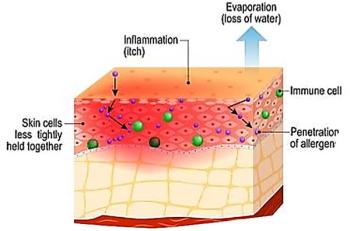Obesity-related cancer mortality in the US has increased significantly over the past 2 decades, according to a national epidemiological analysis presented at ENDO 2025. The study found a nearly fourfold rise in age-adjusted mortality rates (AAMRs) for obesity-related cancers from 1999 to 2020, with pronounced disparities across age groups, geographic regions, and demographic populations.1
“Obesity is a significant risk factor for multiple cancers, contributing to significant mortality,” lead researcher Faizan Ahmed, MD, of Hackensack Meridian Jersey Shore University Medical Center in Neptune City, New Jersey, said in a press release. “This research underscores the need for targeted public health strategies such as early screening and improved access to care, especially in high-risk rural and underserved areas.”2
According to the Endocrine Society, obesity is associated with increased risk for developing the following cancers: adenocarcinoma of the esophagus, breast (in women who have gone through menopause), colon and rectum, uterus, gallbladder, upper stomach, kidney, liver, ovaries, pancreas, thyroid, meningioma, and multiple myeloma.2
- Obesity-related cancer deaths increased nearly four-fold between 1999 and 2020.
- Older adults, rural populations, and residents in the Midwest experienced the highest mortality rates.
- Disparities by sex, race, and location underscore need for targeted public health strategies.
Using CDC WONDER mortality data, Ahmed and colleagues analyzed 33 572 obesity-related cancer deaths recorded between 1999 and 2020. The AAMR increased from 3.73 per million population in 1999 (95% CI, 3.45–4.01) to 13.52 in 2020 (95% CI, 13.08–13.97). The overall average annual percent change (AAPC) was 5.92% (95% CI, 5.23–6.44; P < .00001). A steeper increase occurred from 2018 to 2020, with an annual percent change (APC) of 19.37% (95% CI, 9.59–24.20; P < .00001).1
Age-based analysis showed that individuals aged ≥65 years had the highest AAMR at 20.82 (95% CI, 20.52–21.11), with a peak of 41.54 in 2020. The AAPC in this group was 6.26% (95% CI, 5.39–6.90; P < .00001), significantly higher than in the 25–64-year age group.1
Sex-based trends revealed that women had a higher average AAMR (7.22; 95% CI, 7.12–7.32) compared to men (6.59; 95% CI, 6.48–6.70). However, the AAPC was higher in men at 6.75% (95% CI, 6.23–7.24; P < .00001) compared to 5.37% in women (95% CI, 4.58–5.98; P < .0001).1
Among racial and ethnic groups, Hispanic participants experienced the highest AAPC at 6.31% (95% CI, 3.78–9.29; P < .001), while the Black population had the lowest (5.37%; 95% CI, 4.7%-6.05%; P < .00001), Ahmed and colleagues reported.1
Geographic analysis showed the Midwest had the highest regional AAMR at 7.96 (95% CI, 7.79–8.13) and an AAPC of 6.01% (P < .00001), while the Northeast had the lowest AAMR (5.7; 95% CI, 5.54–5.85) and an AAPC of 5.56% (P < .00001). State-level data identified Vermont, Minnesota, and Oklahoma as having AAMRs above the 90th percentile; Utah, Alabama, and Virginia were below the 10th percentile.1
Both urban and rural areas showed significant increases in obesity-related cancer deaths. The AAPC was 6.03% in urban areas (95% CI, 5.33–6.60) and 6.98% in rural regions (95% CI, 5.97–8.75; P < .00001).1
The authors concluded that targeted public health interventions—including screening, prevention strategies, and improved access to care—are essential to address rising obesity-related cancer mortality and the demographic disparities identified.1
"Given these trends, targeted public health interventions, including preventive measures, early screening, and equitable healthcare access, are pivotal," investigators wrote.1
References:
- Ullah A, Ahmed F, Haider R, et al. Obesity-Associated Cancer Mortality in the United States (1999-2020): A National Epidemiological Analysis. Abstract SUN-583. Presented at: ENDO 2025; July 12-15, 2025; San Francisco, CA.
- Obesity-associated cancers tripled nationwide over past two decades. News release. Endocrine Society. July 13, 2025. Accessed July 14, 2025. https://www.endocrine.org/news-and-advocacy/news-room/endo-annual-meeting/endo-2025-press-releases/ahmed-press-release

























































































































































































































































































